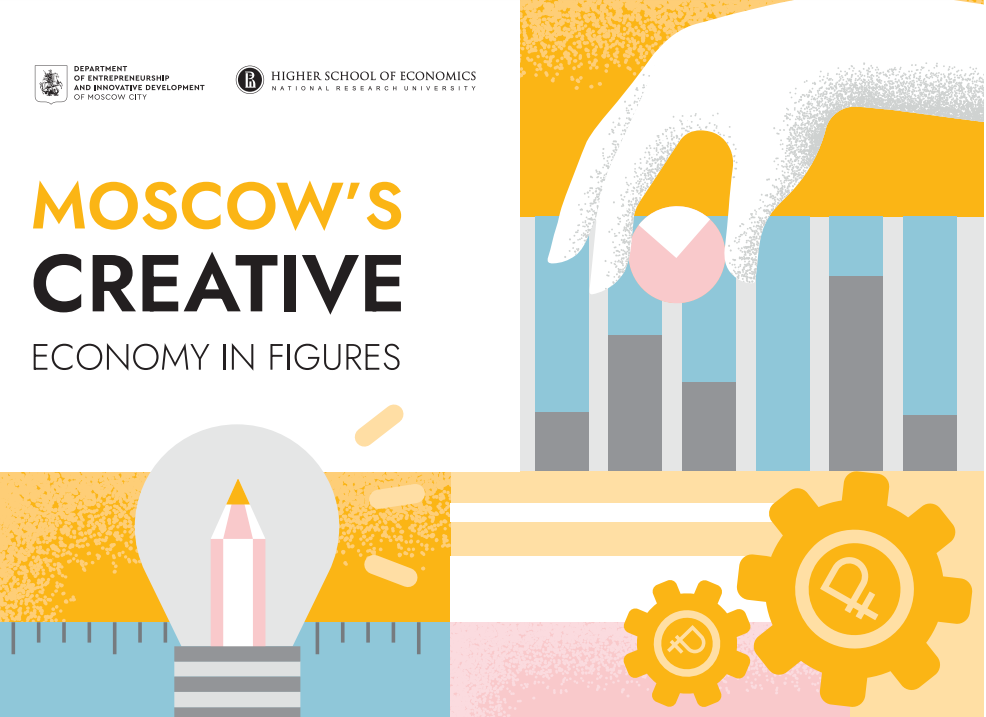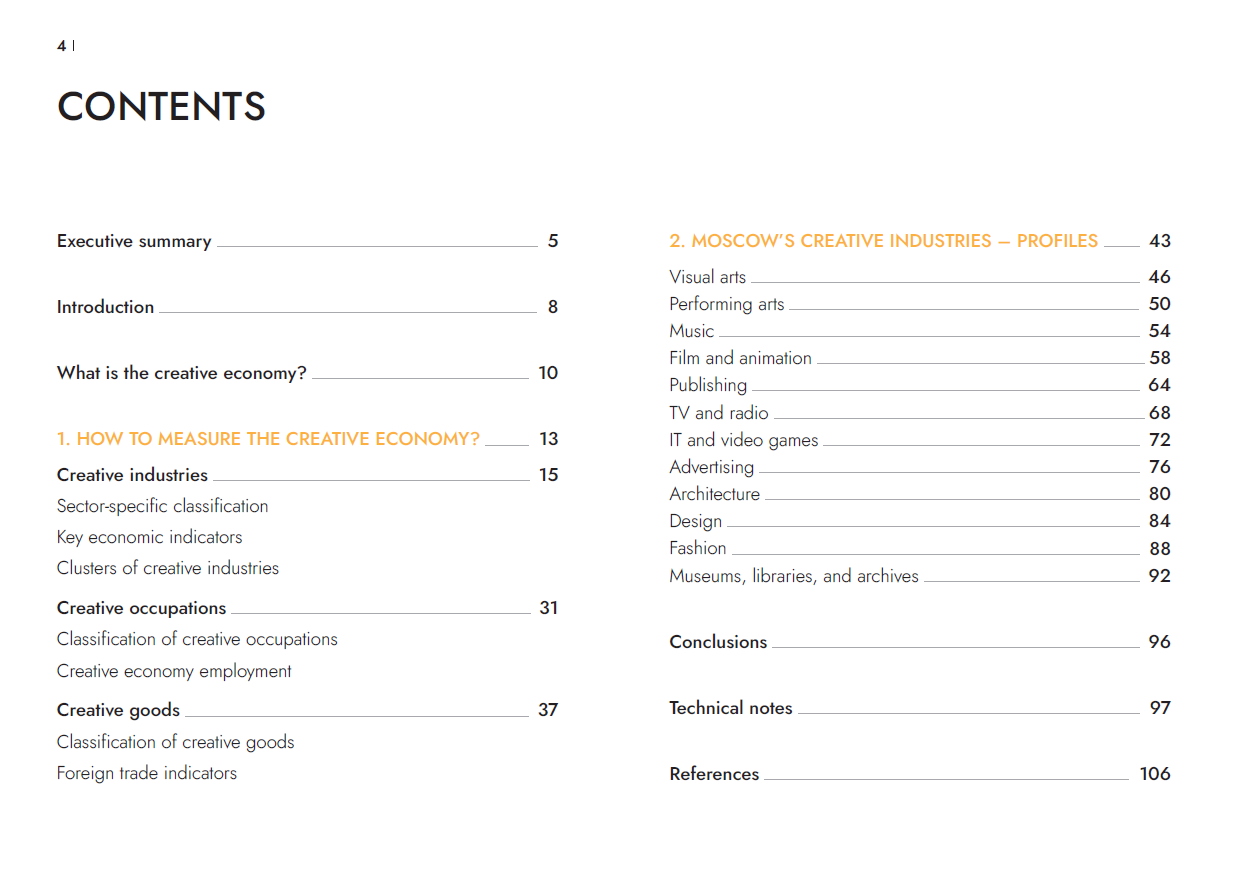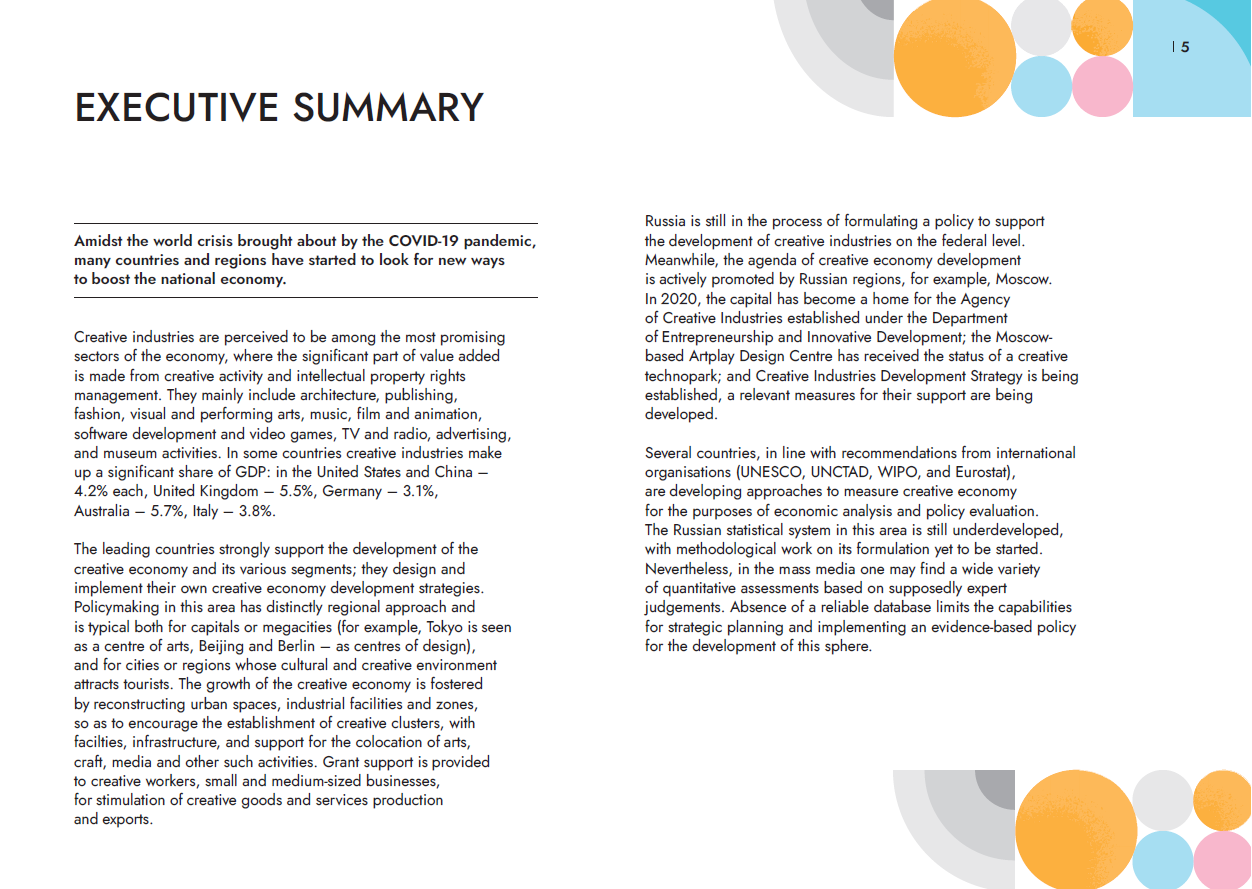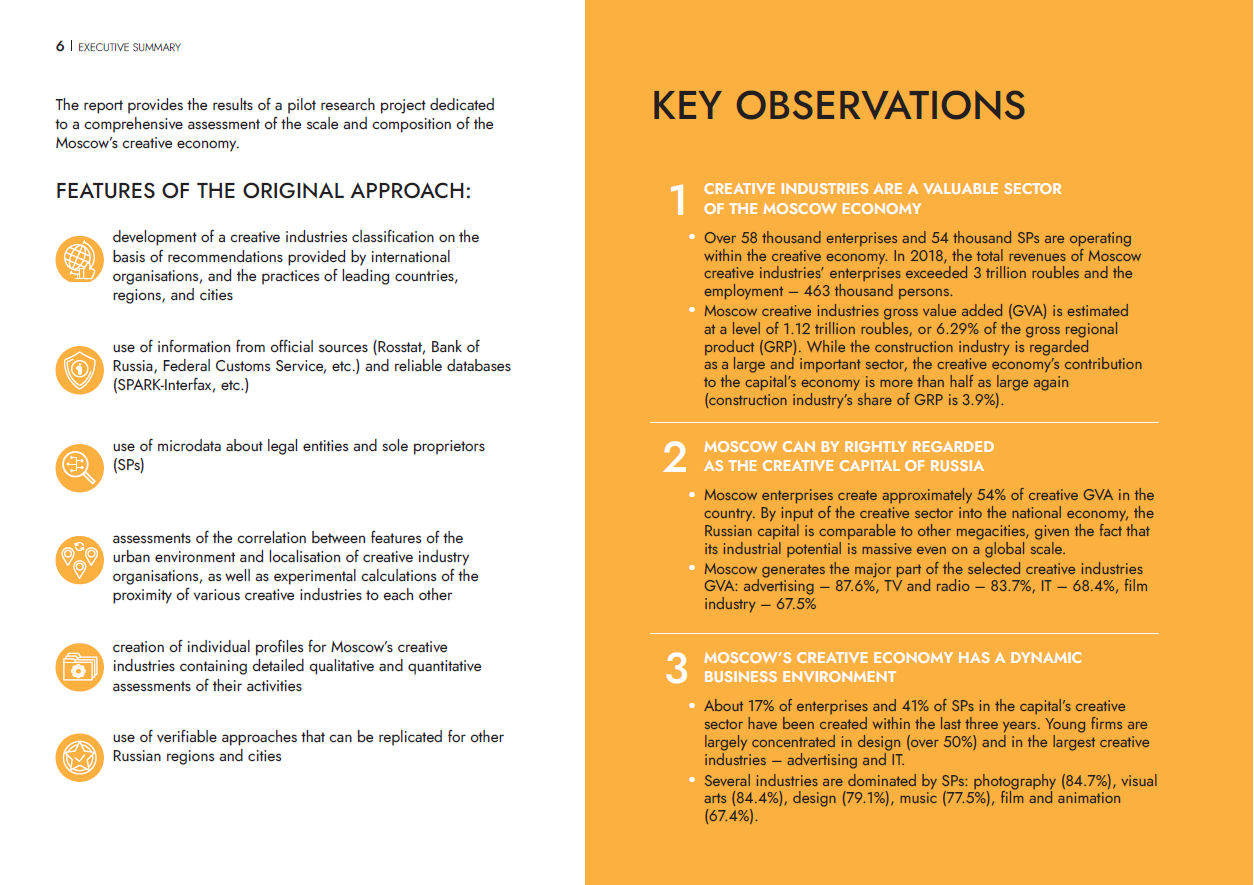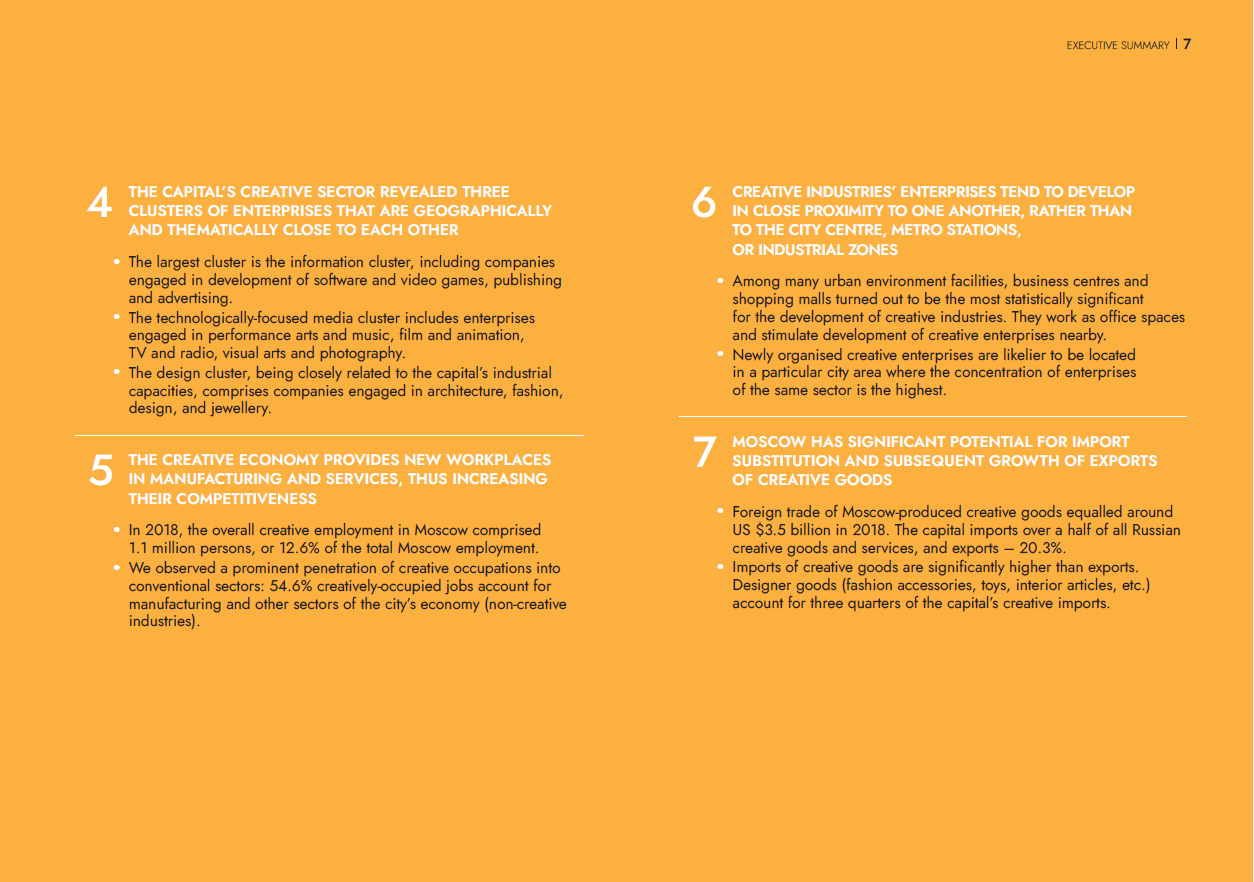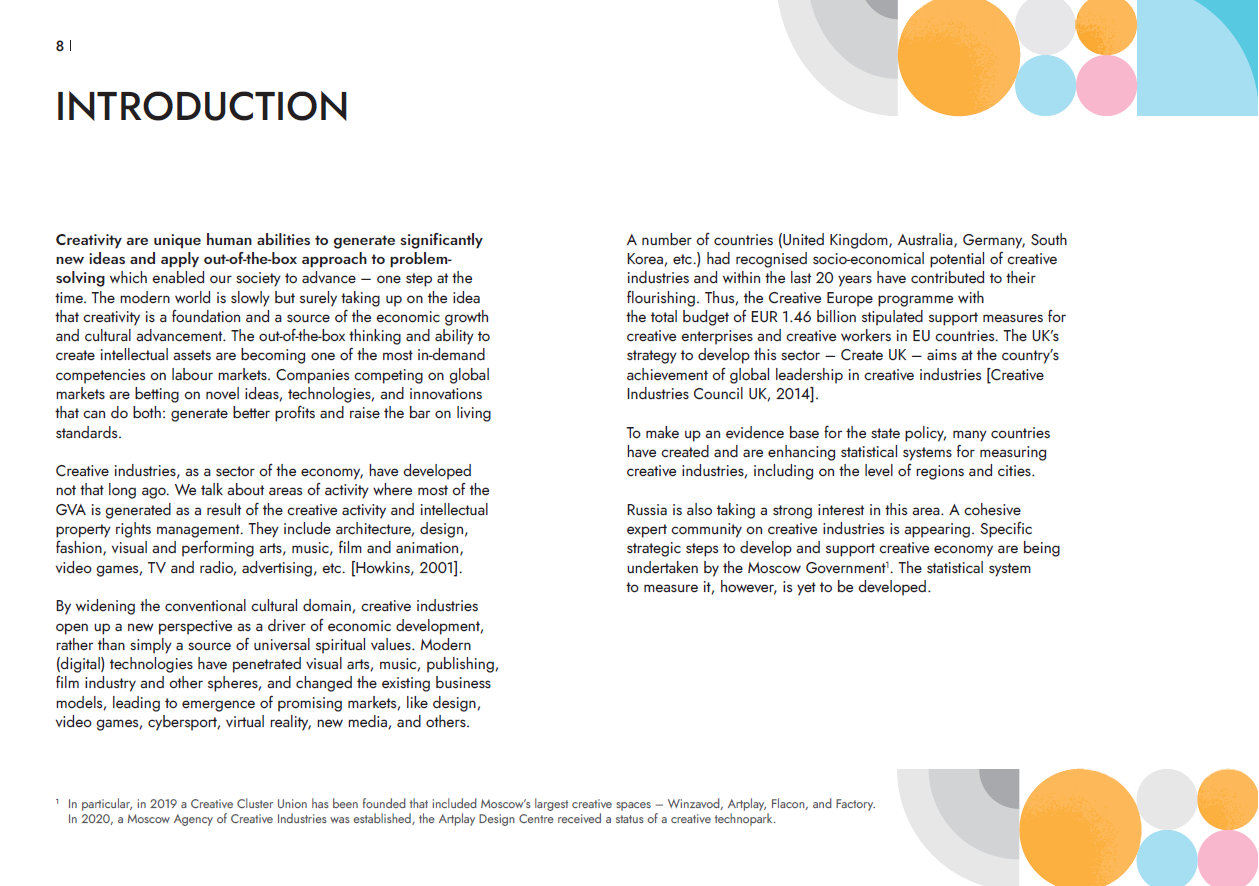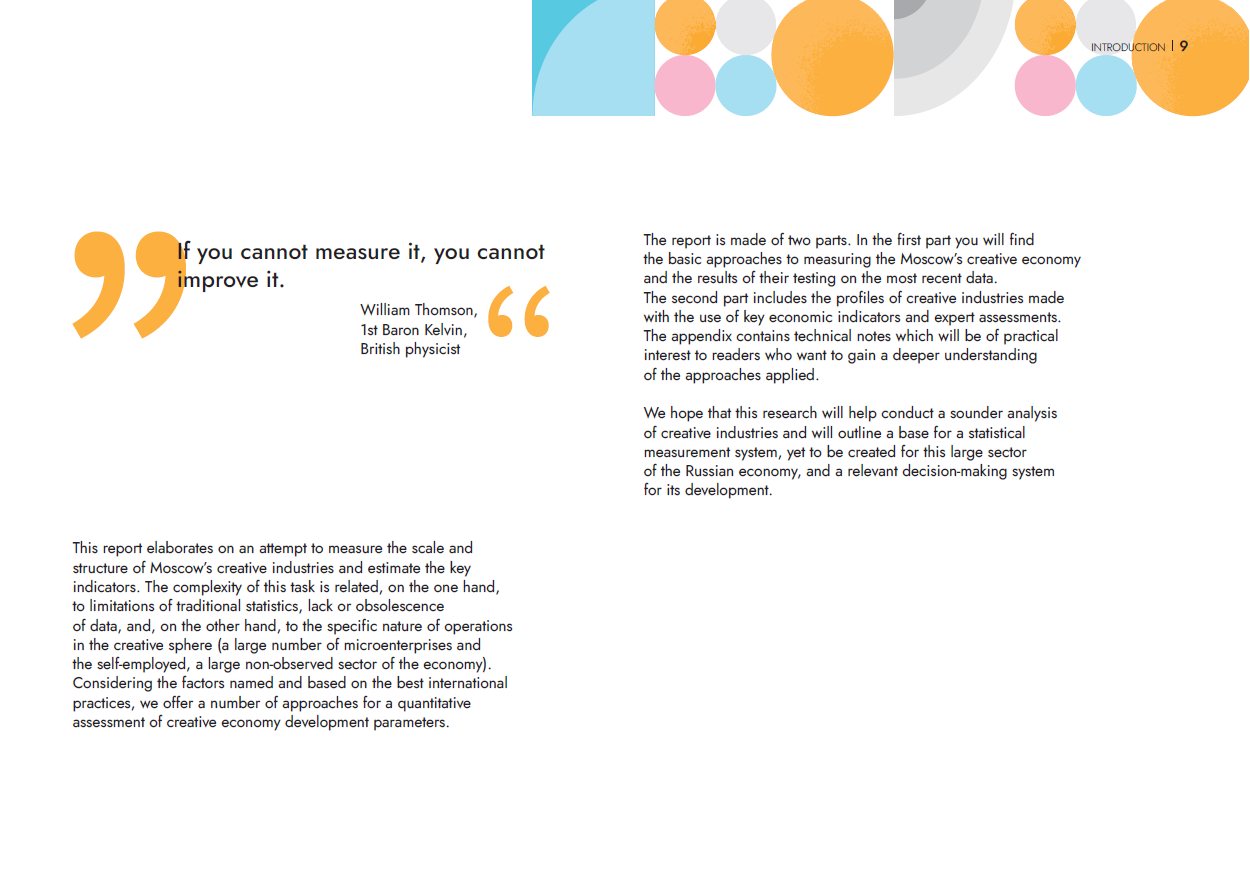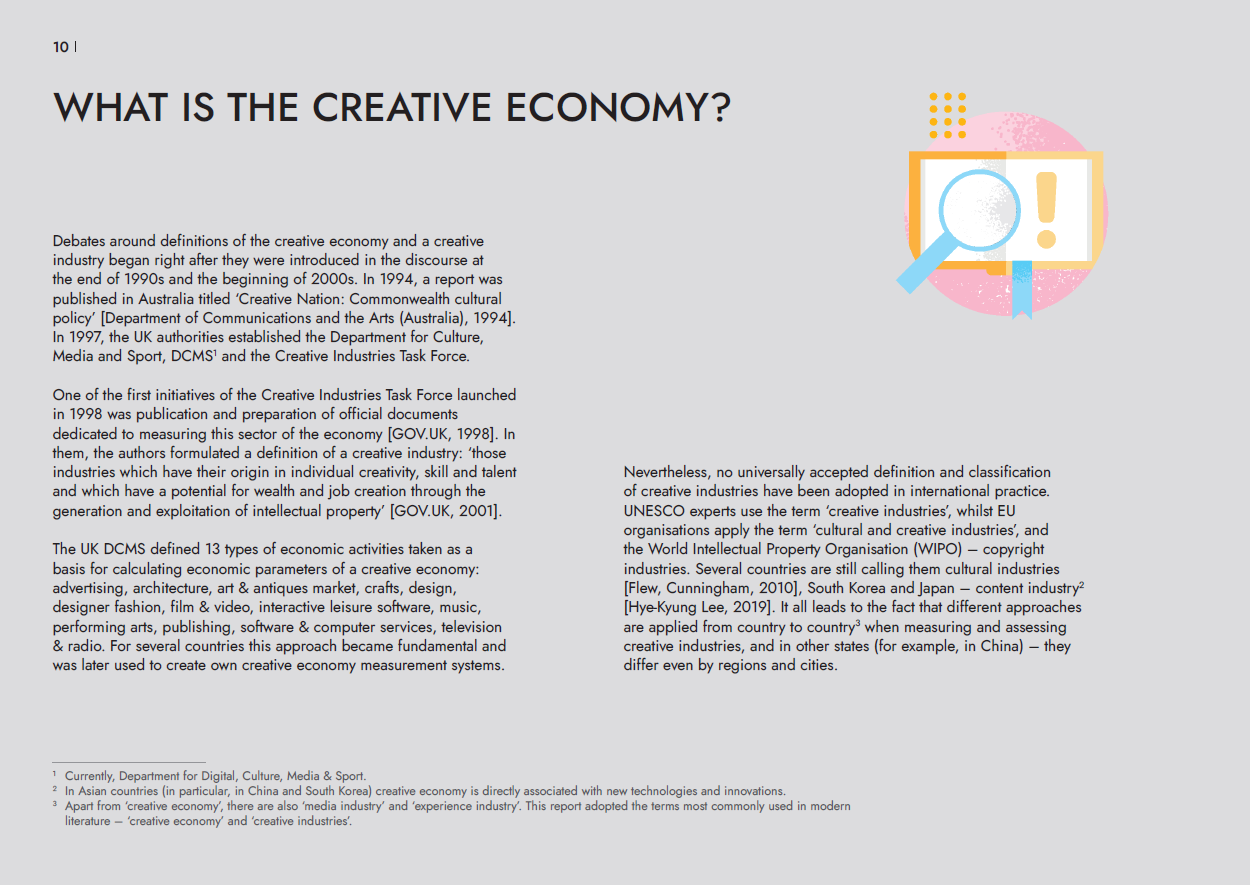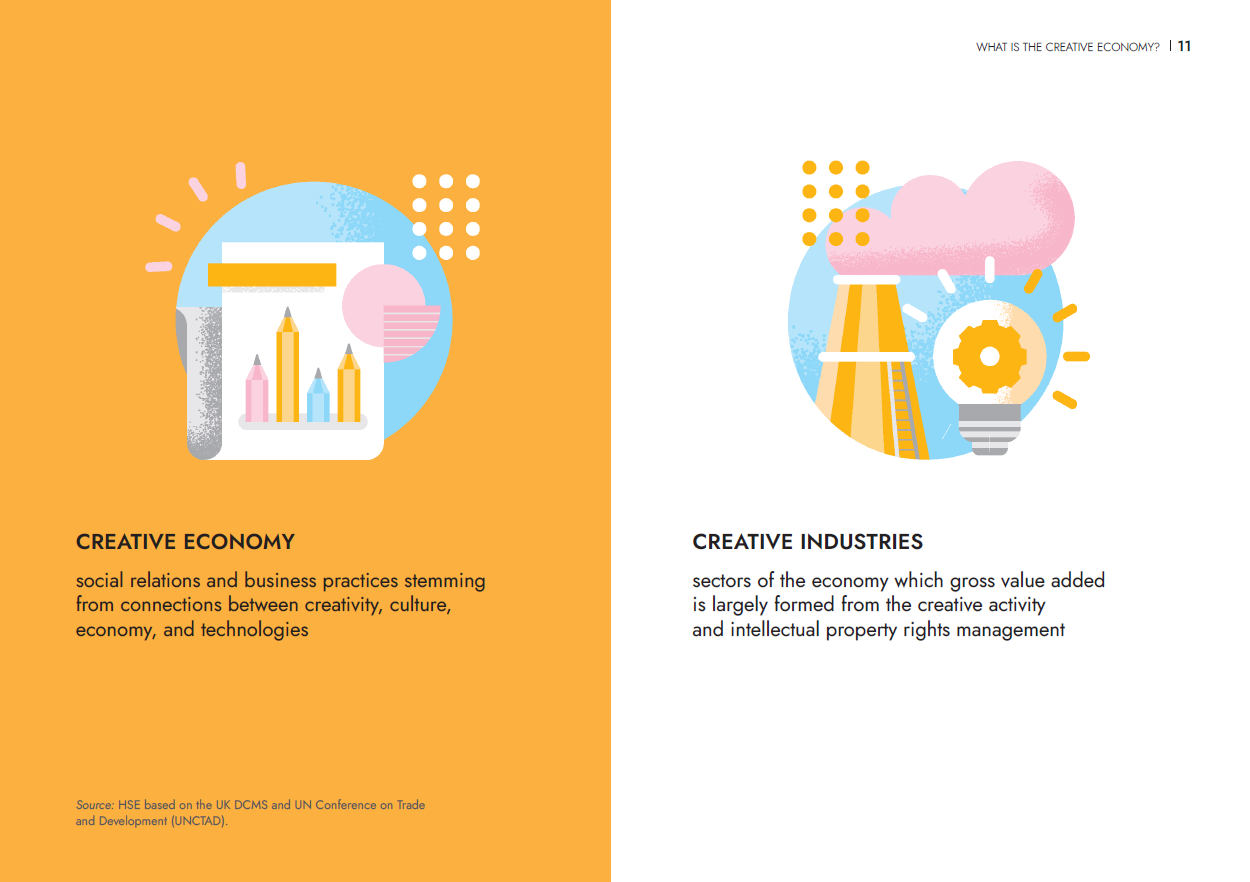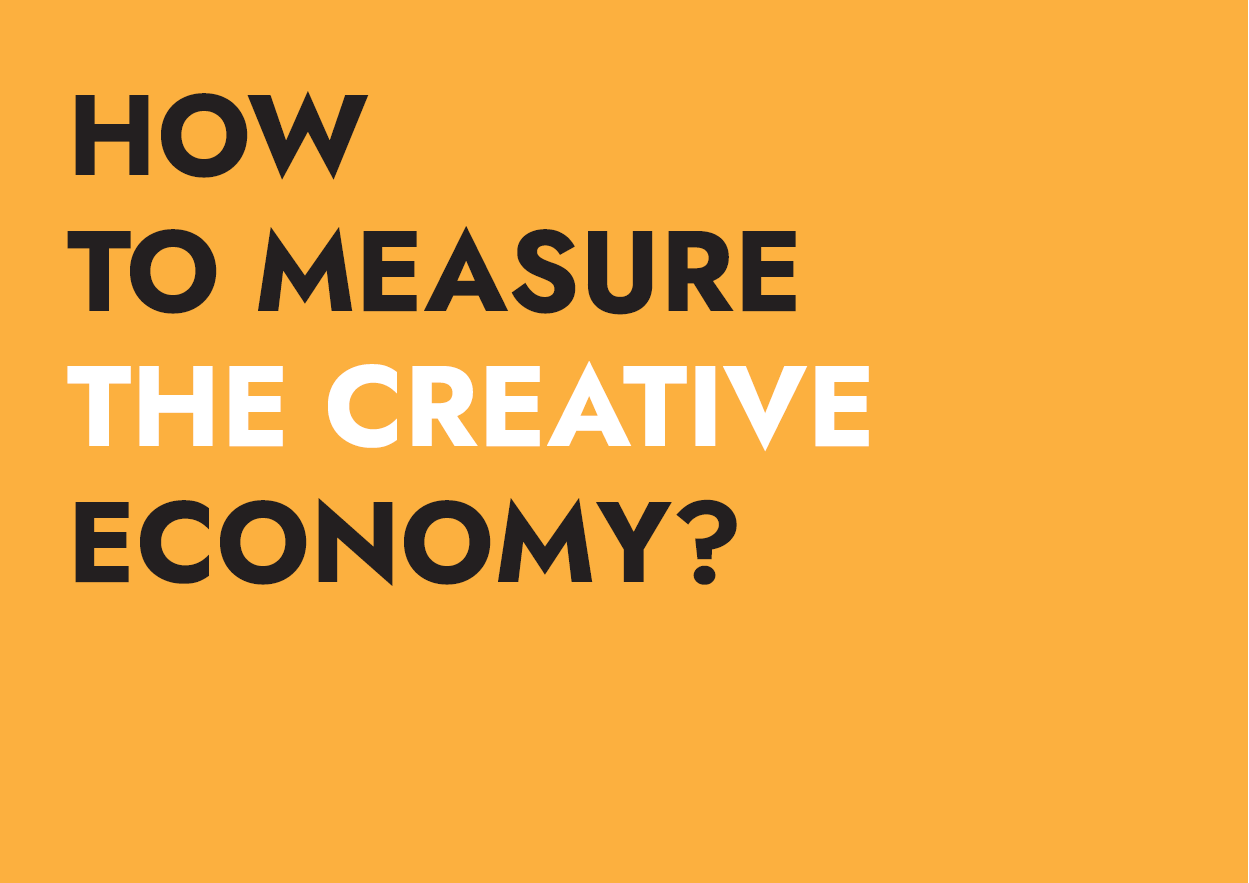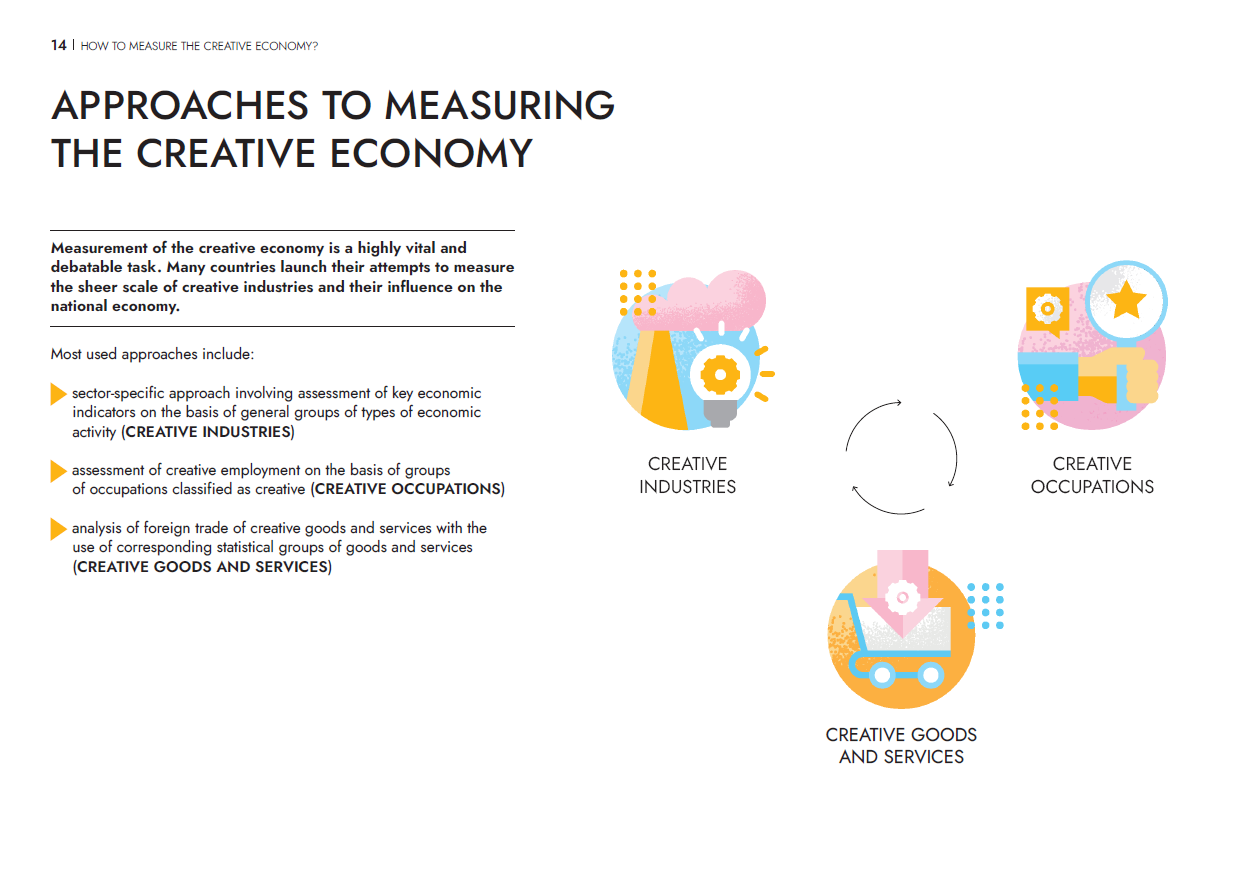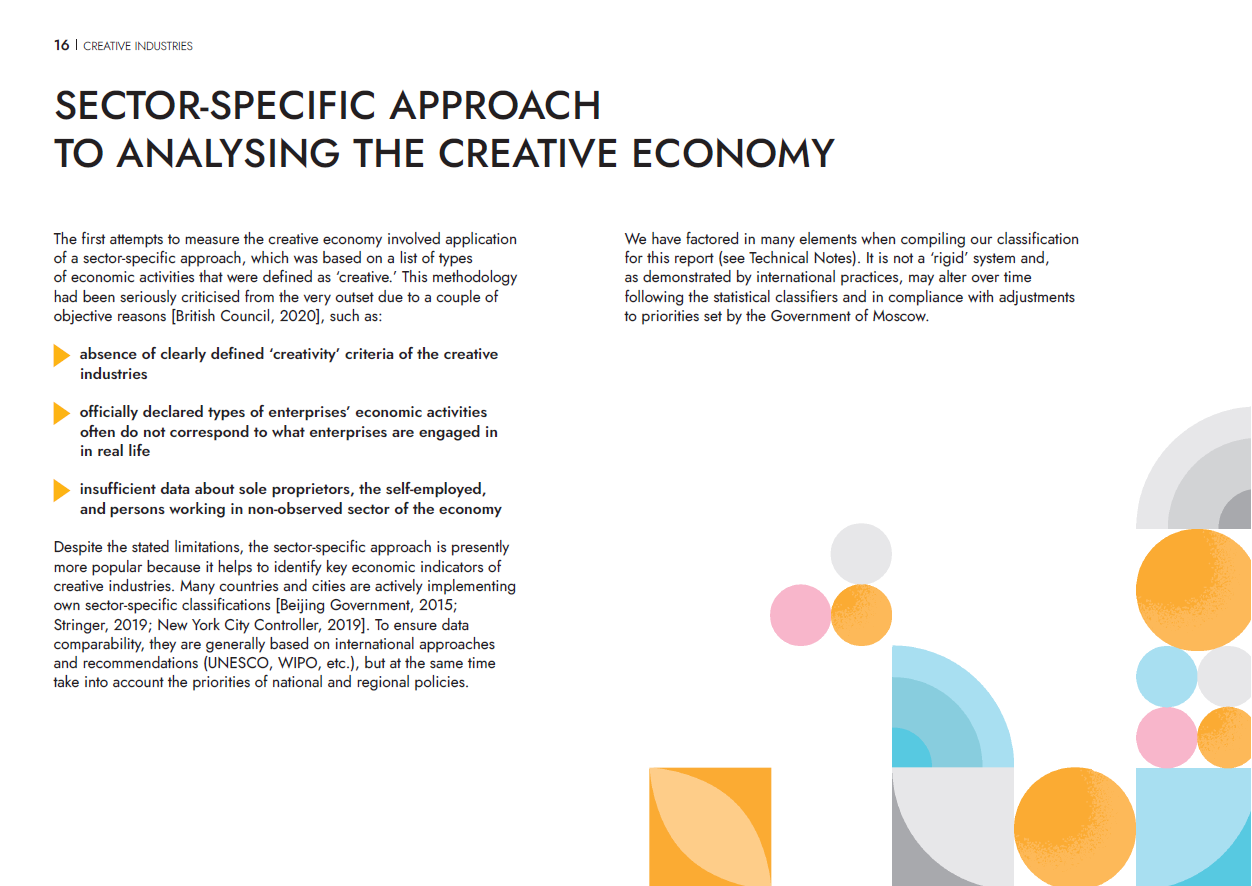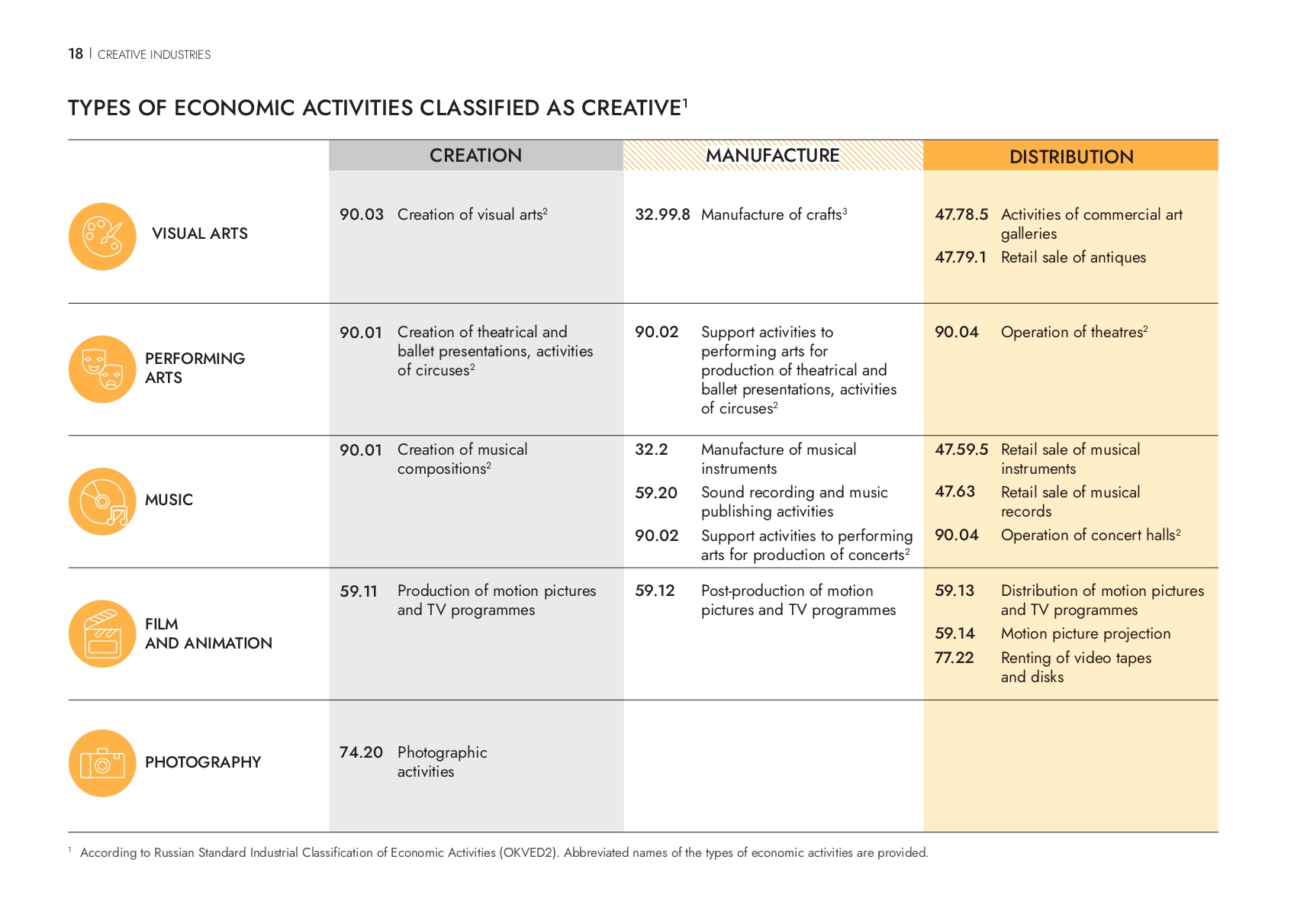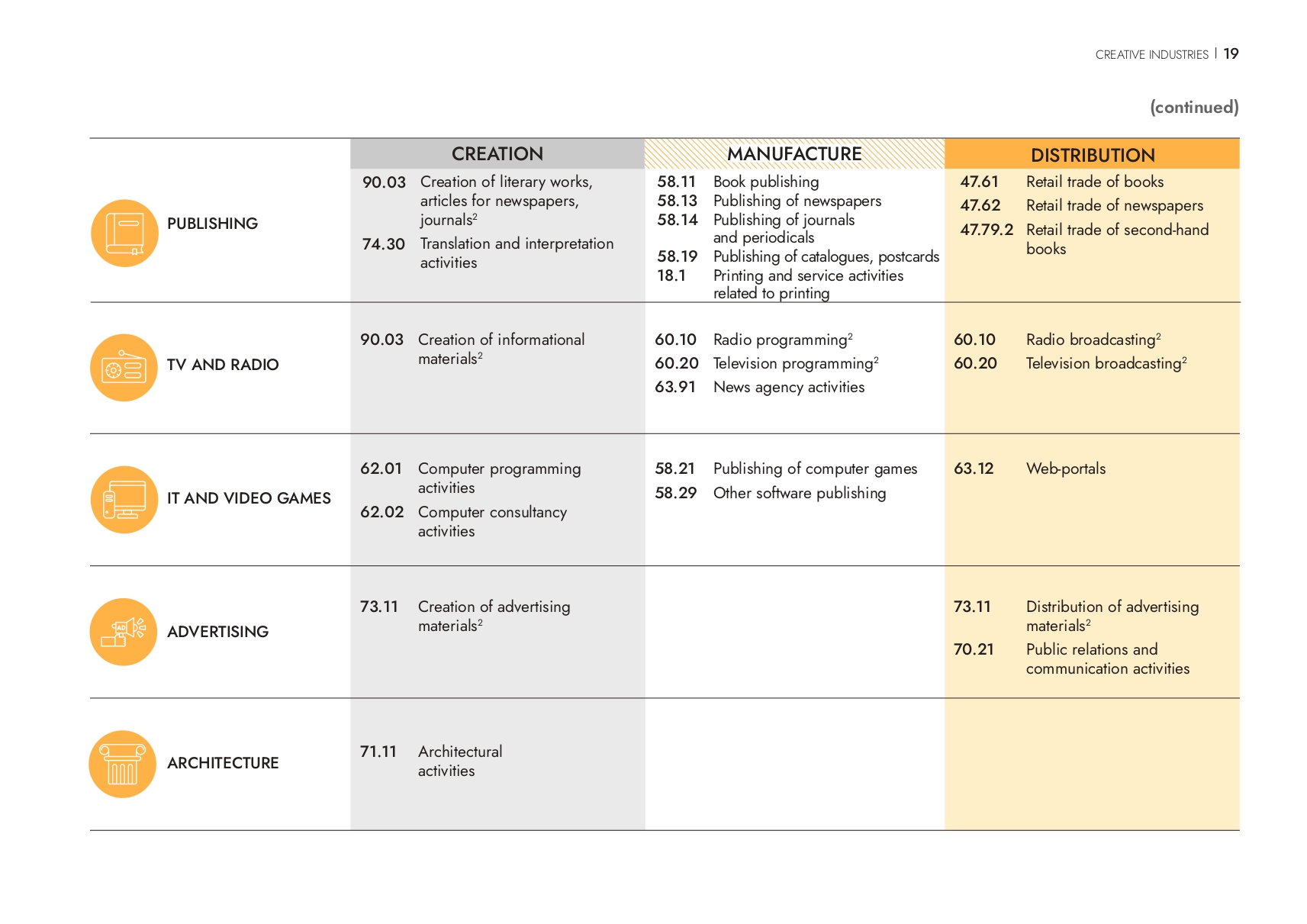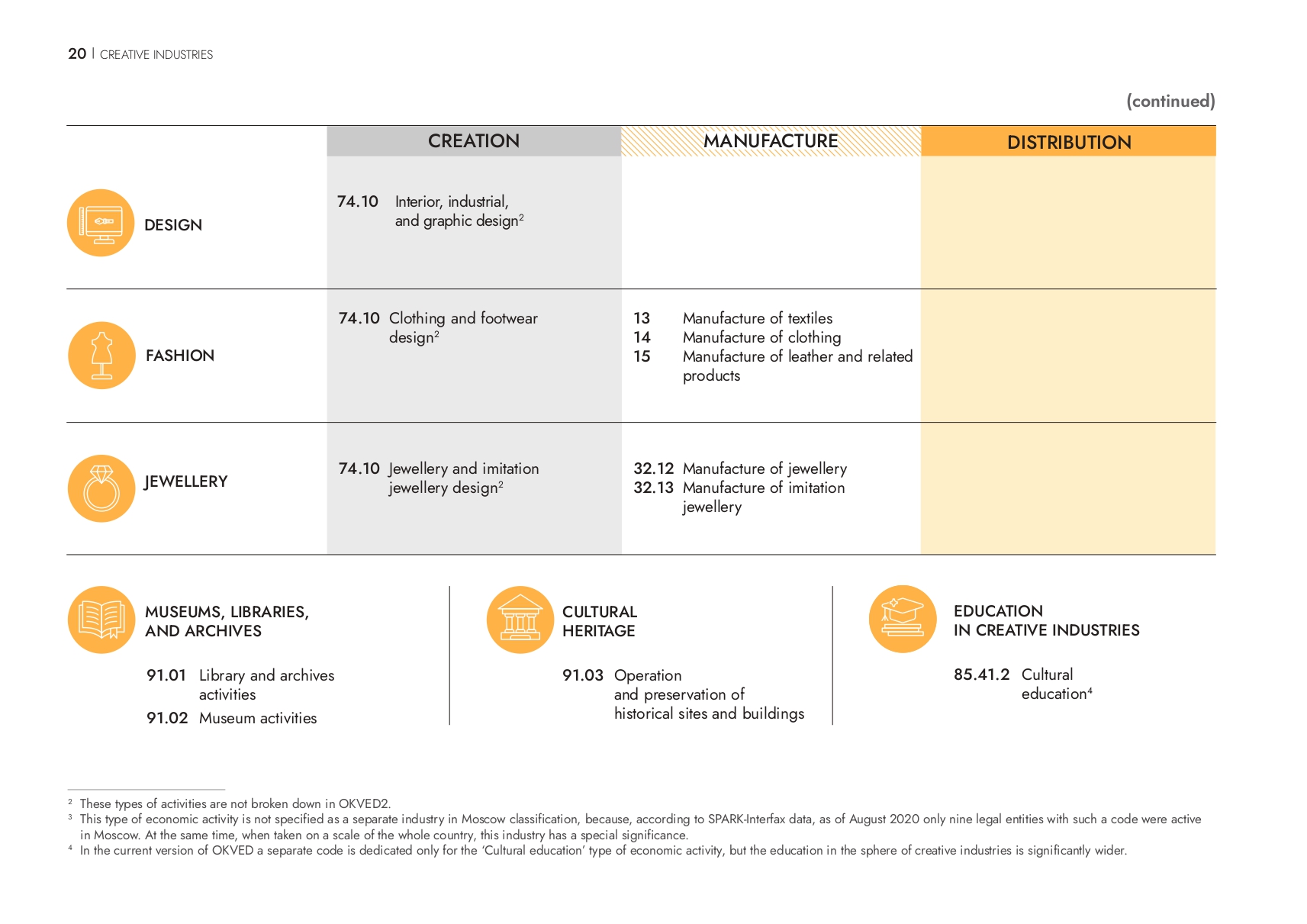Creativity is a unique human ability to generate significantly new ideas and apply out-of-the-box approach to problem-solving, which enables our society to advance one step at a time.
Creative industries, as a sector of the economy, have developed not that long ago. By creative industries we mean areas of activity where most of the GVA is generated as a result of the creative activity and intellectual property rights management. They include architecture, design, fashion, visual and performing arts, music, film and animation, video games, TV and radio, advertising, etc.
A number of countries (United Kingdom, Australia, Germany, South Korea, etc.) had recognised socio-economical potential
of creative industries and within the last 20 years have contributed to their flourishing. For the first time, the study assesses
the scale and structure of Moscow's creative economy, presents key approaches to its quantitative measurement.
Approaches to measuring the Moscow’s creative economy
Creative industries
Key results
Read more
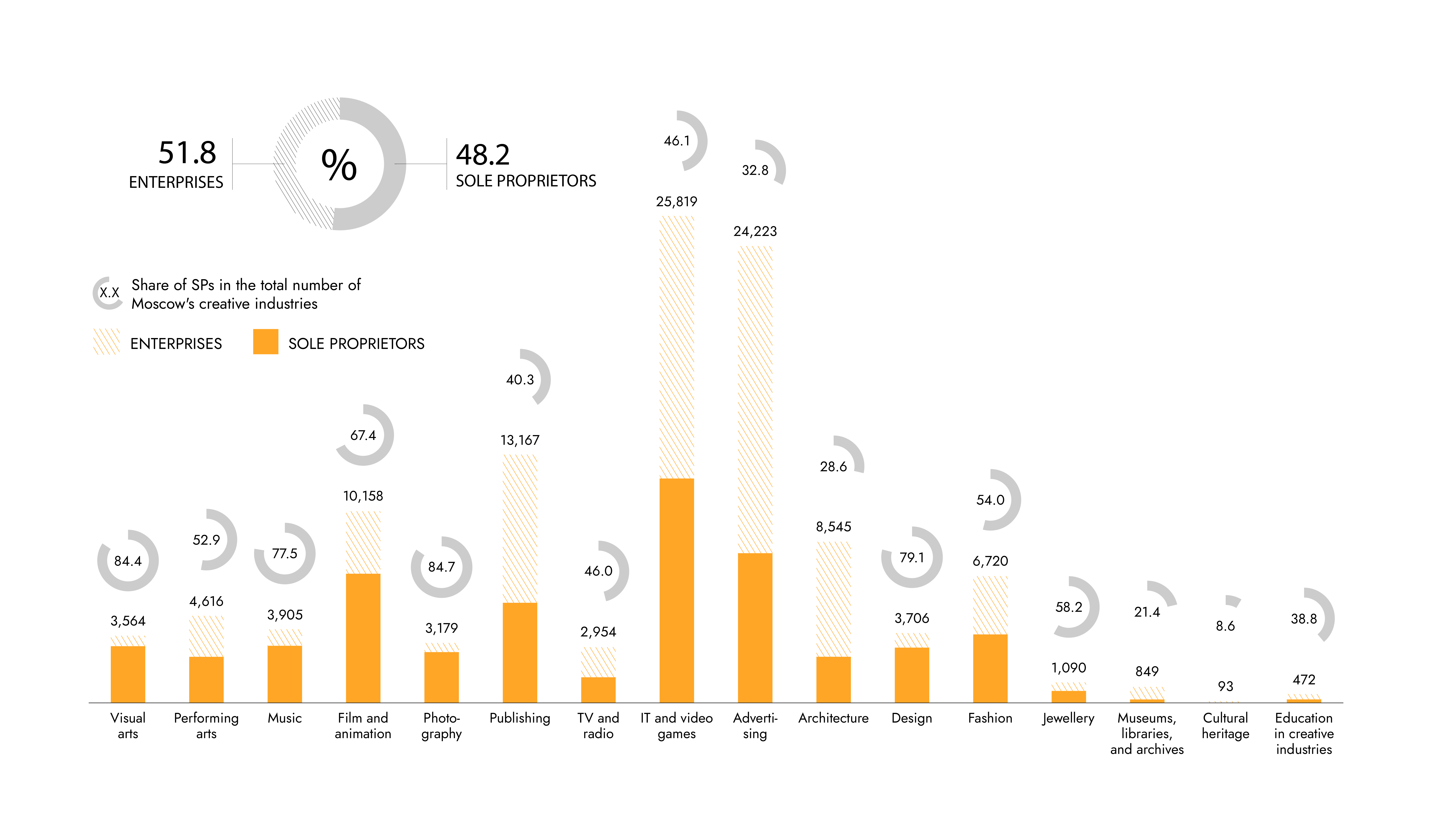 Registered enterprises and sole proprietors
Registered enterprises and sole proprietors• Over 58 thousand enterprises and 54 thousand SPs are operating within the creative economy. In 2018, the total revenues of Moscow creative industries’ enterprises exceeded 3 trillion roubles and the employment – 463 thousand persons.
• Moscow creative industries gross value added (GVA) is estimated at a level of 1.12 trillion roubles, or 6.29% of the gross regional product (GRP). While the construction industry is regarded as a large and important sector, the creative economy’s contribution to the capital’s economy is more than half as large again (construction industry’s share of GRP is 3.9%).
Read more
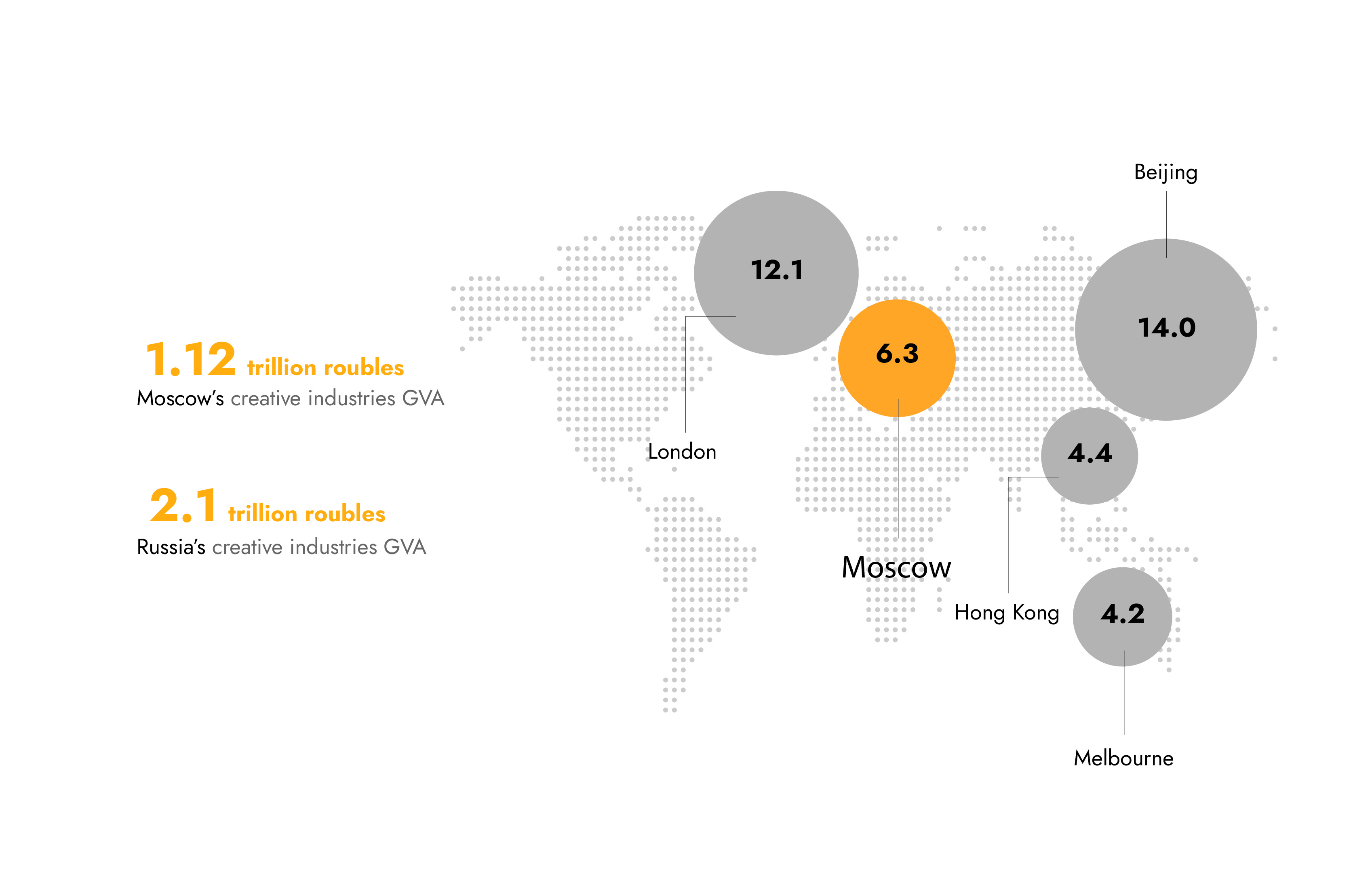 Creative industries’ share in the gross city product: 2018, %
Creative industries’ share in the gross city product: 2018, % • Moscow enterprises create approximately 54% of creative GVA in the country. By input of the creative sector into the national economy, the Russian capital is comparable to other megacities, given the fact that its industrial potential is massive even on a global scale.
• Moscow generates the major part of the selected creative industries GVA: advertising – 87.6%, TV and radio – 83.7%, IT – 68.4%, film industry – 67.5%.
Read more
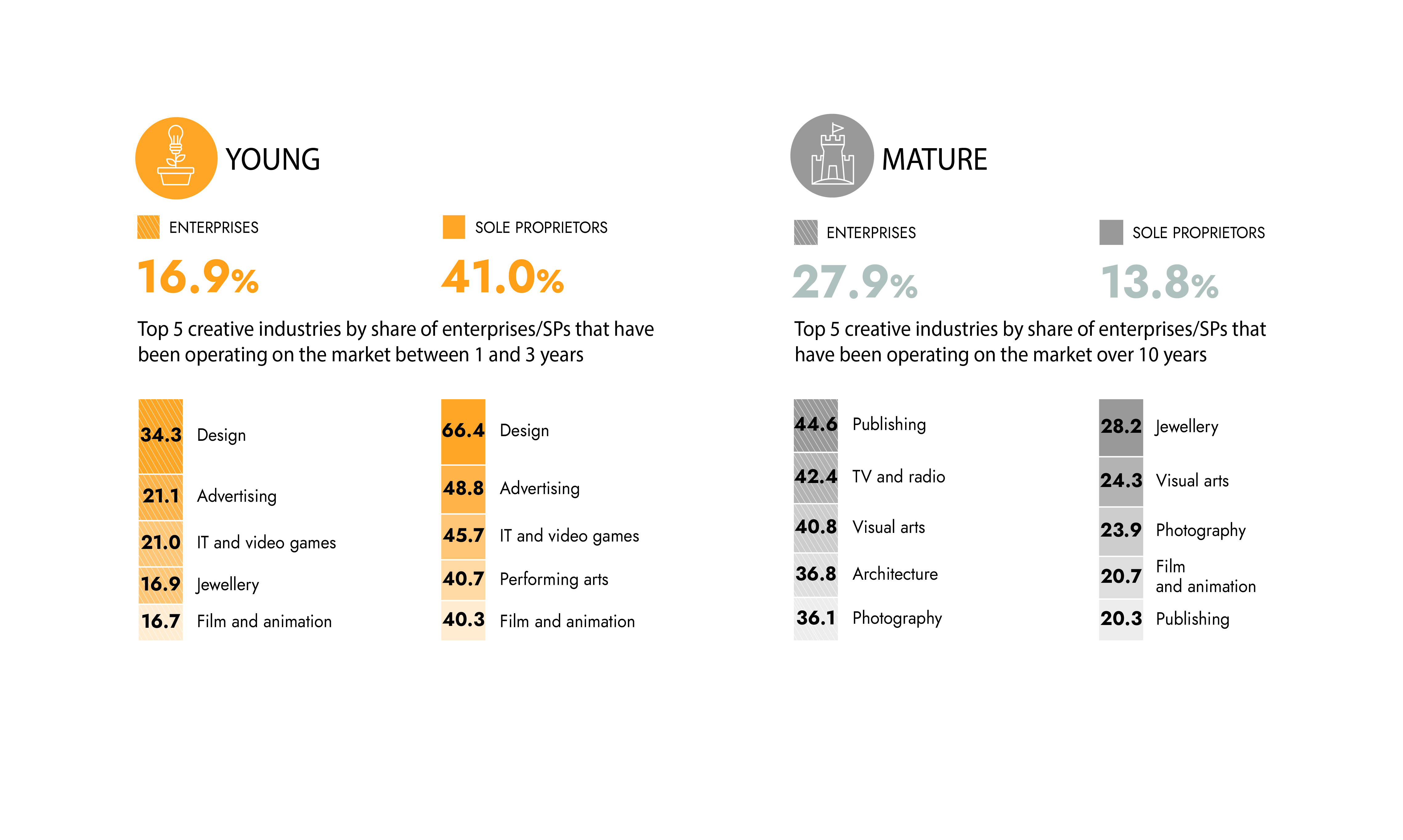 Creative industries breakdown by age of enterprise
Creative industries breakdown by age of enterprise• About 17% of enterprises and 41% of SPs in the capital’s creative sector have been created within the last three years. Young firms are largely concentrated in design (over 50%) and in the largest creative industries – advertising and IT.
• Several industries are dominated by SPs: photography (84.7%), visual arts (84.4%), design (79.1%), music (77.5%), film and animation (67.4%).
Read more
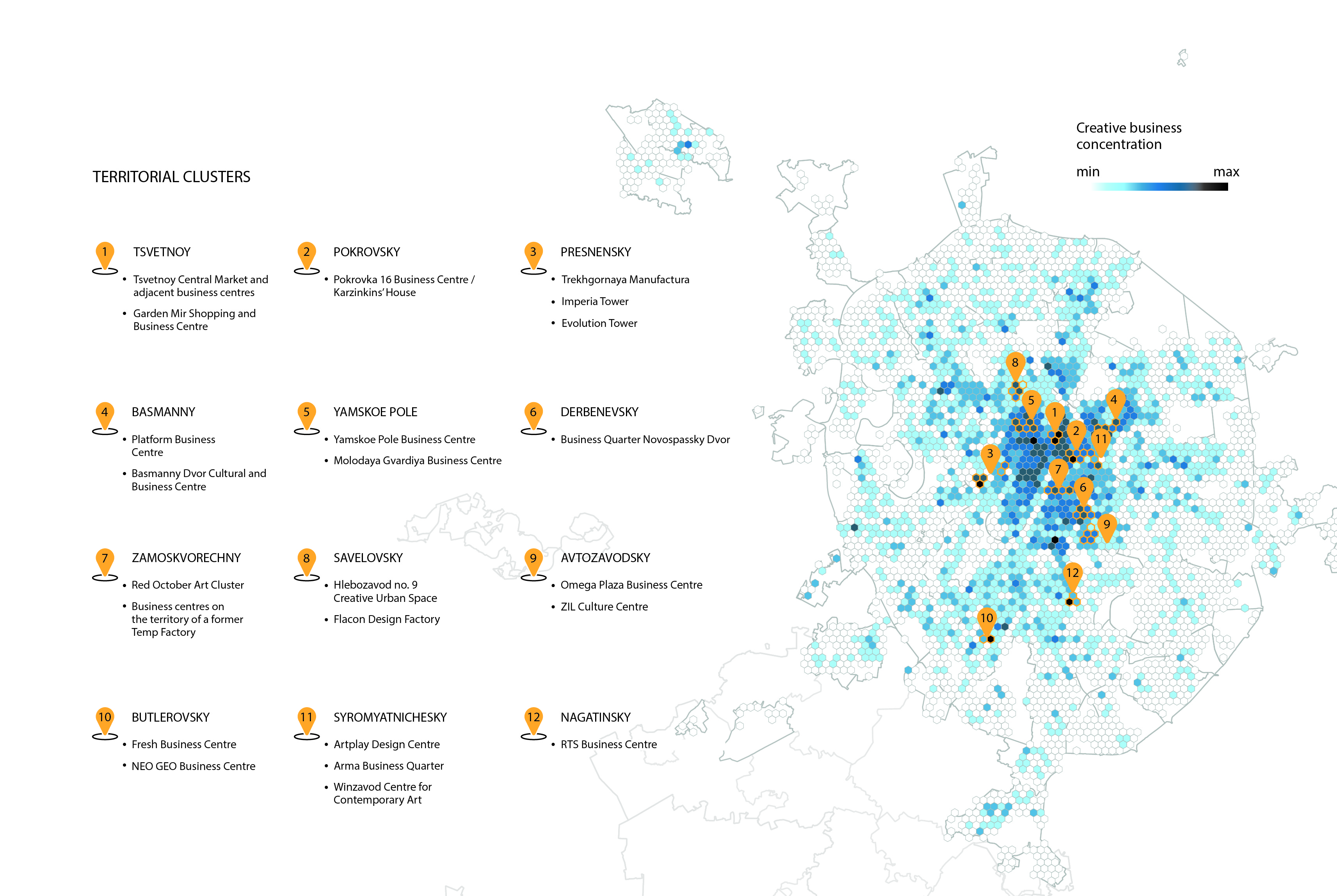 Creative map of Moscow
Creative map of Moscow• The largest cluster is the information cluster, including companies engaged in development of software and video games, publishing and advertising.
• The technologically-focused media cluster includes enterprises engaged in performance arts and music, film and animation, TV and radio, visual arts and photography.
• The design cluster, being closely related to the capital’s industrial capacities, comprises companies engaged in architecture, fashion, design, and jewellery.
Read more
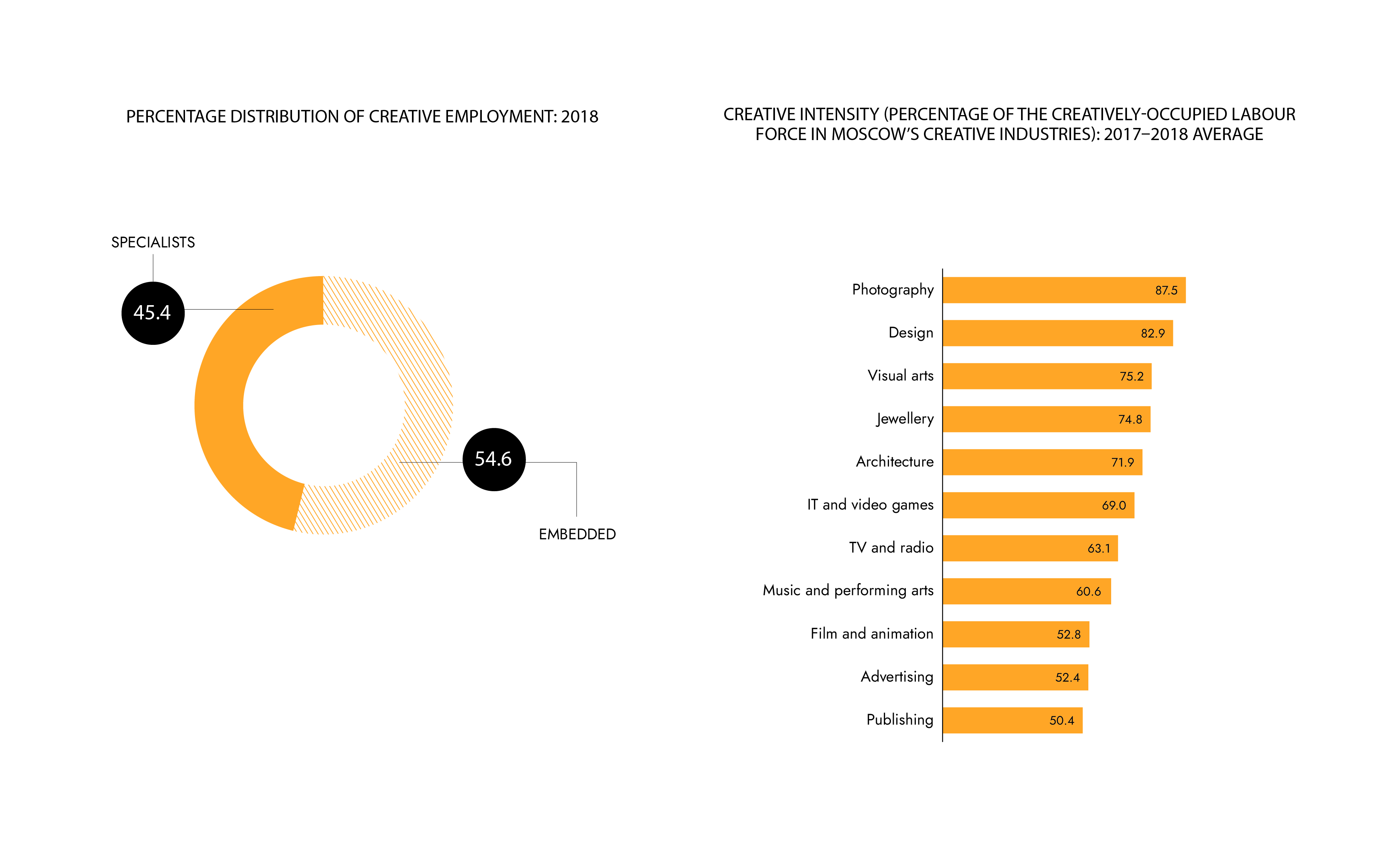 Creative employment
Creative employment • In 2018, the overall creative employment in Moscow comprised 1.1 million persons, or 12.6% of the total Moscow employment.
• We observed a prominent penetration of creative occupations into conventional sectors: 54.6% creatively-occupied jobs account for manufacturing and other sectors of the city’s economy (non-creative industries).
Read more
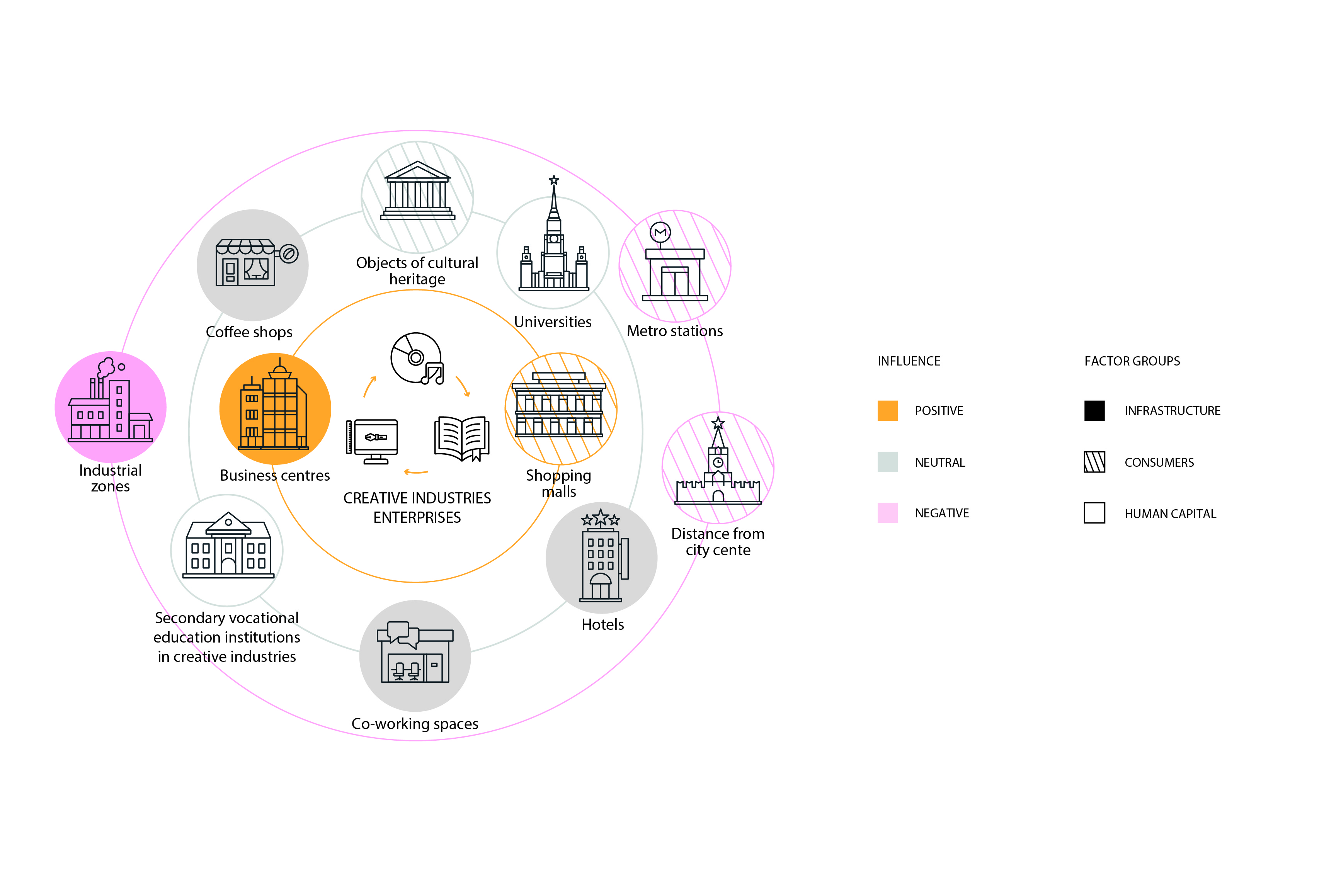 Urban environment factors that influence localization of creative industries
Urban environment factors that influence localization of creative industries• Among many urban environment facilities, business centres and shopping malls turned out to be the most statistically significant for the development of creative industries. They work as office spaces and stimulate development of creative enterprises nearby.
• Newly organised creative enterprises are likelier to be located in a particular city area where the concentration of enterprises of the same sector is the highest.
Read more
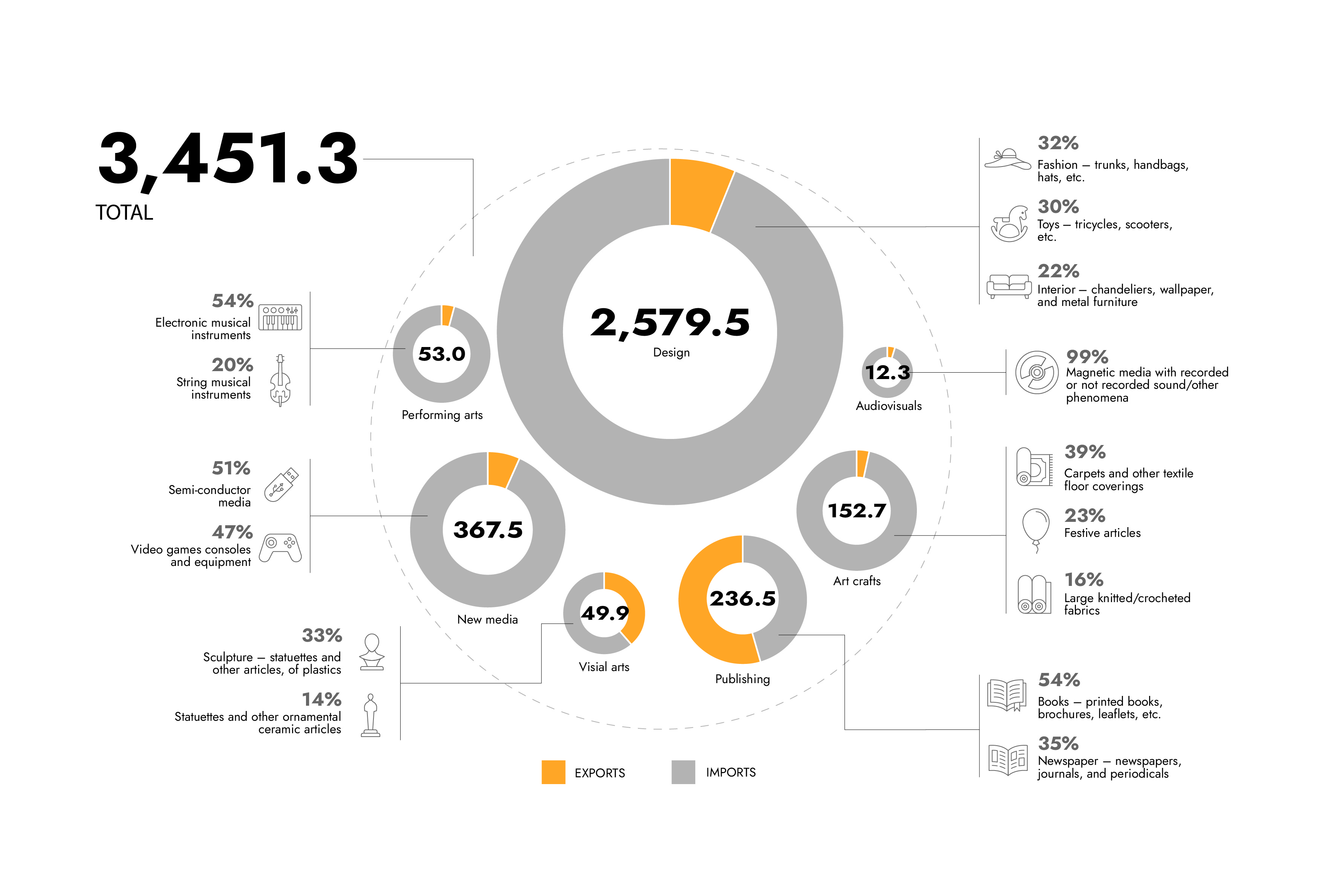 Foreign trade turnover of Moscow’s creative goods by group: 2018, million USD
Foreign trade turnover of Moscow’s creative goods by group: 2018, million USD• Foreign trade of Moscow-produced creative goods equalled around US $3.5 billion in 2018. The capital imports over a half of all Russian creative goods and services, and exports – 20.3%.
• Imports of creative goods are significantly higher than exports. Designer goods (fashion accessories, toys, interior articles, etc.) account for three quarters of the capital’s creative imports.
